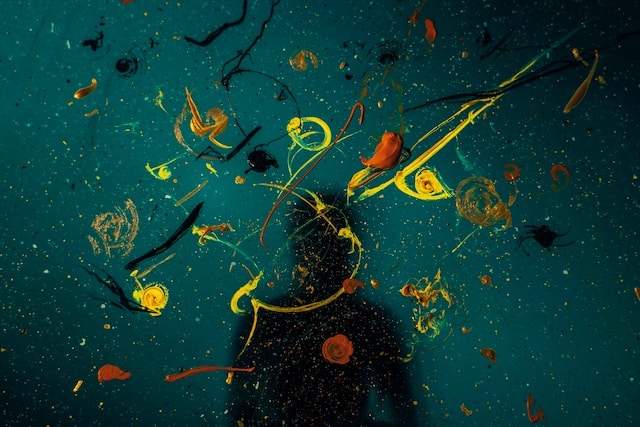The internet has revolutionized the way we live, work and play. It’s no surprise that it has also changed the way we create art. Gone are the days when artists were limited by their physical surroundings or access to resources. The internet has opened up new possibilities for artistic expression, breaking down geographical boundaries and providing limitless opportunities to showcase one’s creativity. In this blog post, we’ll explore how technology is transforming the world of art and paving the way for new forms of expression that were once unimaginable. So sit back, relax and let’s dive into the exciting world of digital art!
The Role of the Internet in Artistic Expression
The internet has played a significant role in transforming the world of art. It has made it possible for artists to connect with audiences from all over the world, breaking down geographical barriers and expanding their reach.
With social media platforms like Instagram, Facebook, Twitter and TikTok, artists can now showcase their work to millions of people at once. This not only provides them with exposure but also allows them to receive feedback and interact with their audience in real-time.
The internet has also made it easier for artists to collaborate with one another regardless of where they are located. With video conferencing tools like Zoom or Google Meet, musicians can record songs together while residing in different parts of the world.
Moreover, the rise of online marketplaces such as Etsy or eBay have given artists an opportunity to sell their work directly to consumers without having to go through intermediaries.
In summary, the internet has revolutionized artistic expression by providing new avenues for showcasing creativity and connecting artists with audiences on a global scale.
The Benefits of Using Technology in Creative Expression
The use of technology has revolutionized the way we express ourselves artistically. Technology provides a limitless canvas for individuals to create, share and interact with their art. With technological tools such as digital cameras, graphic design software and online platforms, artists can now explore new forms of expression that were once impossible.
One major benefit of using technology in creative expression is the ability to collaborate with people from all over the world. Through online platforms like social media and video conferencing applications, artists can connect with other creatives who share similar interests or even work on projects together without ever meeting in person.
Another advantage of incorporating technology into artistic expression is the ease and speed at which art can be produced and shared. Artists no longer need to worry about expensive materials or access to physical exhibition spaces; they can simply upload their creations online for anyone in the world to see.
Furthermore, technology offers endless possibilities for experimentation and innovation in art-making techniques. Augmented reality installations, virtual reality experiences, 3D printing sculptures are just a few examples that have been made possible by technological advancements.
Integrating technology into artistic expressions creates an opportunity for unprecedented creativity while opening up doors previously closed by limited resources. By embracing these benefits wholeheartedly instead of fearing them as competition or replacement we safeguard our future as creators who embrace progress rather than shy away from it!
Examples of New Forms of Artistic Expression Made Possible by the Internet
The internet has revolutionized the way artists create and share their work. With technology constantly evolving, new innovative forms of artistic expression have emerged.
One example is digital art, which uses computer software to create images and animations. This form of art allows for endless possibilities in terms of color, texture, and design. Artists can also use social media platforms to showcase their work and connect with other creatives from around the world.
Another exciting development is virtual reality (VR) art. VR technology enables artists to create immersive experiences that transport viewers into a different world entirely. From interactive installations to 360-degree videos, this medium offers unprecedented opportunities for exploration and creativity.
The rise of online gaming has also led to a new form of performance art known as live streaming. Gamers can broadcast themselves playing video games live on sites like Twitch or YouTube, building an audience by engaging with fans through commentary and gameplay strategies.
Crowdfunding platforms such as Kickstarter provide independent artists with a way to fund projects without relying on traditional institutions like galleries or publishers.
With the internet continuously breaking down barriers in the creative industry, there’s no telling what groundbreaking innovations are yet to come!
Conclusion
The internet has revolutionized the way art is created and shared. With technology, artists have been able to break boundaries and explore new forms of artistic expression that were previously impossible or inaccessible. The benefits of using technology in creative expression are numerous, from enabling collaboration between artists across different locations to giving audiences worldwide access to a diverse range of artwork.
The examples we have discussed – virtual reality, digital art installations, livestreaming performances – are just the tip of the iceberg when it comes to the possibilities offered by technology for artistic expression. As technology continues to develop at an unprecedented pace, we can expect even more innovative ways for artists to create and share their work with global audiences.
Ultimately, what all these new forms of artistic expression made possible by the internet demonstrate is that creativity knows no bounds. Artistic talent can flourish regardless of geographical location or financial resources; all it takes is a willingness to experiment with new ideas and embrace technological tools as part of one’s creative process. By breaking down barriers and expanding opportunities for self-expression on a global scale, technology has truly democratized art in ways that were once unimaginable.




